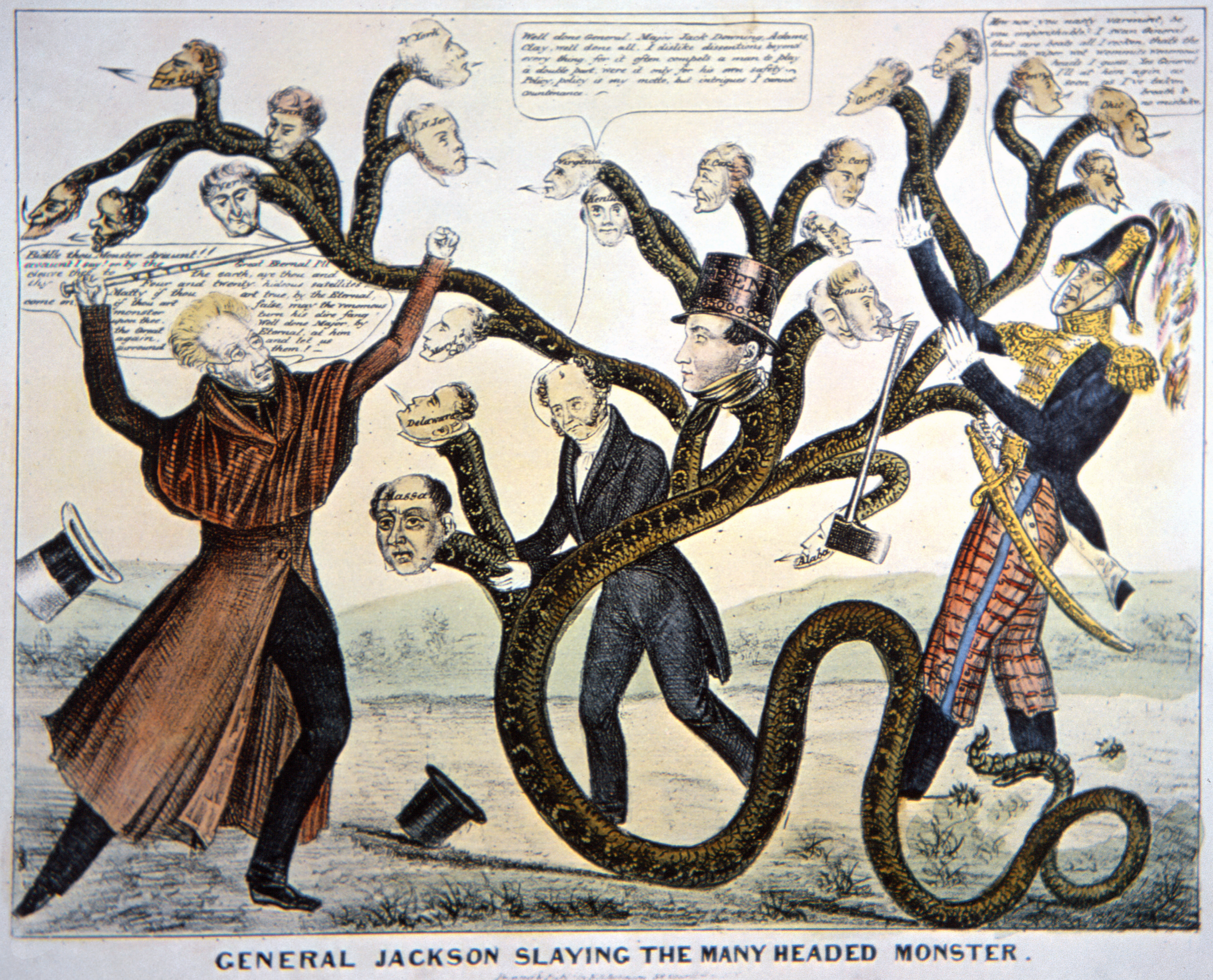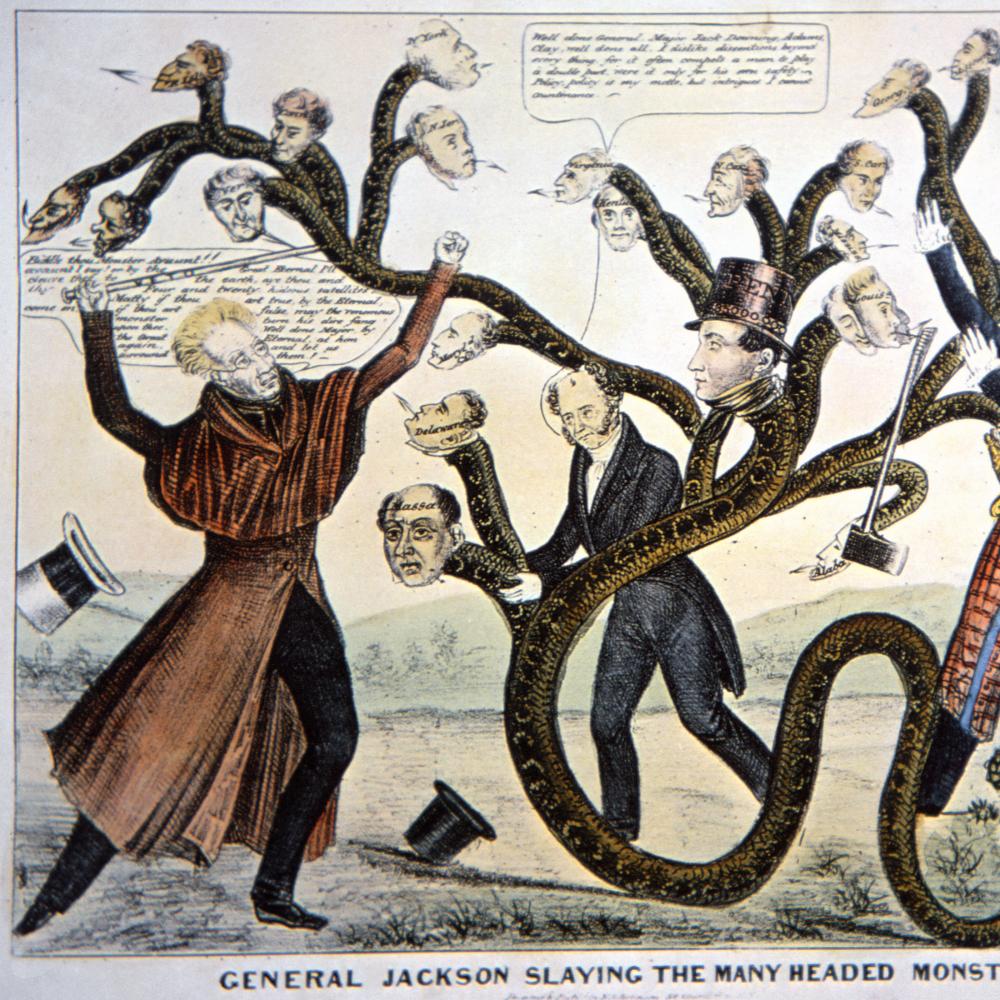0. 8011. During Andrew Jackson’s presidential term he decided that the National Bank must go. He decided that it did not warrant reform but rather needed to be destroyed. In 1832, a Renewal Bill for the United States Bank came to the President. Jackson chose to veto the Bill for the Bank, and the address that he included with the veto stated
King Andrew and the Bank | The National Endowment for the Humanities
In its place, Congress approved a new national bank—the Second Bank of the United States—in 1816. It too had a twenty-year charter, set to expire in 1836. … Andrew Jackson’s election in 1832 signaled the rise of the Democratic Party and a new style of American politics. Jackson understood the views of the majority, and he skillfully

Source Image: history.com
Download Image
The Bank War was a political struggle that developed over the issue of rechartering the Second Bank of the United States (B.U.S.) during the presidency of Andrew Jackson (1829-1837). The affair resulted in the shutdown of the Bank and its replacement by state banks. The Second Bank of the United States was established as a private organization with a 20-year charter, having the exclusive

Source Image: npr.org
Download Image
How Andrew Jackson Ran the United States 1816 with a 20-year charter. Proponents of the bank proposed a renewal of the bank’s charter in 1832, four years before the expiration of the old charter, in order to make the bank’s existence and

Source Image: bloomberg.com
Download Image
Andrew Jackson In His Dispute With The National Bank
1816 with a 20-year charter. Proponents of the bank proposed a renewal of the bank’s charter in 1832, four years before the expiration of the old charter, in order to make the bank’s existence and A Jackson senator from New York, William L. Marcy, defended Jackson’s removals by proclaiming frankly in 1832 that in politics as in war, “to the victor belong the spoils of the enemy.” Jackson was never so candid—or so cynical. Creating the “spoils system” of partisan manipulation of the patronage was not his conscious intention.
World Economy Latest: Fed and ECB Tread Hopefully Into Final Stretch of 2023 – Bloomberg
The Bank War was the political struggle that ensued over the fate of the Second Bank of the United States during the presidency of Andrew Jackson.In 1832, Jackson vetoed a bill to recharter the Why was Andrew Jackson so opposed to the bank of the US? – Quora

Source Image: quora.com
Download Image
Bank War – The Age Of Jackson The Bank War was the political struggle that ensued over the fate of the Second Bank of the United States during the presidency of Andrew Jackson.In 1832, Jackson vetoed a bill to recharter the

Source Image: theageofjacksonth.weebly.com
Download Image
King Andrew and the Bank | The National Endowment for the Humanities 0. 8011. During Andrew Jackson’s presidential term he decided that the National Bank must go. He decided that it did not warrant reform but rather needed to be destroyed. In 1832, a Renewal Bill for the United States Bank came to the President. Jackson chose to veto the Bill for the Bank, and the address that he included with the veto stated

Source Image: neh.gov
Download Image
How Andrew Jackson Ran the United States The Bank War was a political struggle that developed over the issue of rechartering the Second Bank of the United States (B.U.S.) during the presidency of Andrew Jackson (1829-1837). The affair resulted in the shutdown of the Bank and its replacement by state banks. The Second Bank of the United States was established as a private organization with a 20-year charter, having the exclusive
Source Image: businessinsider.com
Download Image
King Andrew and the Bank | The National Endowment for the Humanities President Andrew Jackson and his cabinet, led by powerful Kentucky Senator Henry Clay, were determined to destroy the Bank of the United States. He was motivated by a desire to increase his own political power as well as economic power. The bank had been created in 1816 with leading businessmen, including Clay, as its directors.

Source Image: neh.gov
Download Image
King Andrew and the Bank | The National Endowment for the Humanities 1816 with a 20-year charter. Proponents of the bank proposed a renewal of the bank’s charter in 1832, four years before the expiration of the old charter, in order to make the bank’s existence and

Source Image: neh.gov
Download Image
What can the faces on its currency tell us about a country? A Jackson senator from New York, William L. Marcy, defended Jackson’s removals by proclaiming frankly in 1832 that in politics as in war, “to the victor belong the spoils of the enemy.” Jackson was never so candid—or so cynical. Creating the “spoils system” of partisan manipulation of the patronage was not his conscious intention.

Source Image: nationalgeographic.com
Download Image
Bank War – The Age Of Jackson
What can the faces on its currency tell us about a country? In its place, Congress approved a new national bank—the Second Bank of the United States—in 1816. It too had a twenty-year charter, set to expire in 1836. … Andrew Jackson’s election in 1832 signaled the rise of the Democratic Party and a new style of American politics. Jackson understood the views of the majority, and he skillfully
How Andrew Jackson Ran the United States King Andrew and the Bank | The National Endowment for the Humanities President Andrew Jackson and his cabinet, led by powerful Kentucky Senator Henry Clay, were determined to destroy the Bank of the United States. He was motivated by a desire to increase his own political power as well as economic power. The bank had been created in 1816 with leading businessmen, including Clay, as its directors.